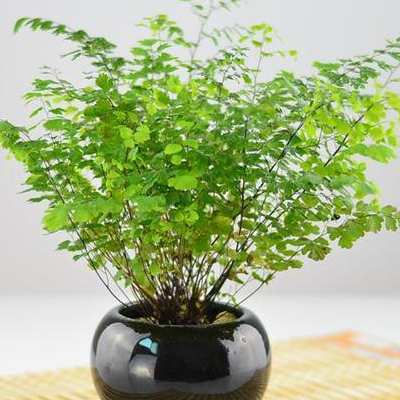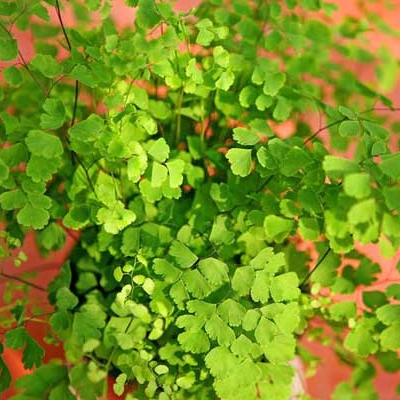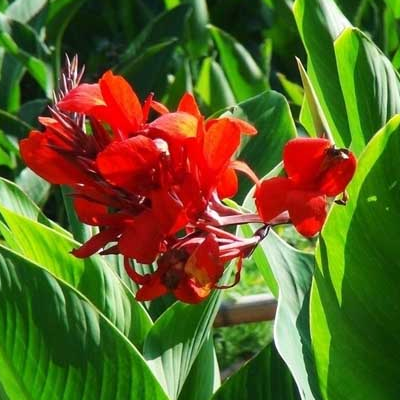What about the long spores on the back of the leaves of Dryopteris Dryopteris? what are the breeding methods?
Dryopteris is very suitable as an indoor ornamental plant, and it is also a favorite of many people, so what about the long spores on the back of the fern leaves? What are the breeding methods of Dryopteris?

What about the long spores on the back of the fern leaves:
1. The spore does not grow much, it will fall off by itself when it is about to mature.
two。 When the spores mature, they float around downwind, because the spores are very small.
3. You'd better not worry about the fact that the spores are too small and the temperature and humidity should be controlled. It's troublesome, and your current method is also good, but be careful to keep it in a windless and humid place. And then wait for the spores to fend for themselves.
4. Corals are aggregates of small animals, not plants, and the coral polyps picked up from the beach are almost dead, plus being away from the sea for a while. It's already a dead thing. I can't.
5. Ferns are generally cultivated by the method of dividing roots, and the spores are of little use. There is also a reminder that it is best to move the plant to the bedroom. Spores floating in the air may cause respiratory problems. Give it a place to move back to the bedroom after the spores fall.
What are the breeding methods of Dryopteris:
1. Split-plant reproduction: Dryopteris can be propagated indoors for four seasons, but usually in early spring, the mother plant is taken out of the basin, its rhizome is cut off, and each piece is planted in a small basin with part of the rhizome and leaves, and then planted in a small basin. The new plant can be obtained by covering the rhizome with mixed soil and irrigating and culturing in a wet environment.
2. Spore reproduction: Dryopteris can also be propagated by spores. Peat and fine sand as substrates are disinfected at high temperature in the oven to kill germs and weed seeds. Then, the sterilized soil is put into a shallow sowing basin, the leaves with mature spores are cut, and the spores are concentrated and evenly sowed in the shallow sowing basin. There is no need to cover the soil, covered with glass sheets, soaked in water from the bottom of the basin, to keep the basin soil moist. When placed in a semi-shady environment of 20-25 ℃, the spores can germinate into prothalli in about a month, and can be planted after the pot is full.
All right, guys, you all know how to reproduce.
How to wither the leaves of Dryopteris Dryopteris? the treatment method of blackening the long spores on the back of the leaves of Dryopteris
Dryopteris Dryopteris is a kind of plant which likes temperature and is not tolerant to strong light, and it is distributed in many parts of our country. It is now a popular domestic plant, but if it is mismanaged during breeding, it can cause leaves to wither or blacken.
What about the withered leaves of Dryopteris?
1. When raising clematis, it is generally best to put them in places where the indoor light is relatively weak. However, in the more exuberant growth season, it is better to give sufficient scattered light.
2, pay attention to, in the daily maintenance process, the soil should be moisturized, so watering must be adequate. In dry weather, water should also be sprinkled on the leaves of Dryopteris to increase the humidity of the air.
3. If there is a blight, you can first control the water, or switch to hydroponic culture. In the usual maintenance, we should control the amount of watering, you can spray more water to maintain air humidity. For the dried leaves, it is best to cut them off.
Treatment of blackening of long spores on the back of Dryopteris leaves
The main results are as follows: 1. The reason of blackening: the plant grows slowly in winter and the nutrients of the leaves are insufficient. If the temperature is low and the leaves are frostbitten, the leaves will gradually blacken. The environment is shaded and impenetrable, and iron ferns like to be overcast. Many families will put it in the living room and bedroom for maintenance. It is inevitable that there is some poor ventilation. If the light is insufficient for a long time and the air is not convective, the leaves will turn black. Lack of fertilizer and water, Dryopteris likes fertilizer, if there is no fertilization for a long time, the wet potted soil will make the plant leaves wilt and gradually turn black.
2. Prevention and control methods: the temperature is low in winter, so it is easy to suffer frost injury. In addition, the light is weak in winter, many families will move the fern to the sunny balcony, but it is easy to freeze when the window is opened sooner or later. So control the indoor temperature, especially in the morning and evening, and don't put it by the window. Dryopteris does not like the muggy environment, especially in summer, which requires regular ventilation, increase air humidity and replenish light properly. Dryopteris prefers sandy loam rich in humus and needs plenty of fertility. Before planting, an appropriate amount of brick shavings or lime particles can be added to the soil to enhance calcium and improve soil permeability. In addition, fertilizing once a month in peacetime maintenance, focusing on calcium supplement.
The cause of the withering of the leaves of Dryopteris
1. The light is strong. Dryopteris itself is a plant that likes a semi-shady growing environment and is more afraid of direct sunlight. If the light is too strong, it will cause the water on the leaves to evaporate quickly and cause the leaves to wither.
2. Lack of water. Dryopteris likes to grow in a relatively humid environment. The soil should be kept moist and the air humidity should be kept at a high level when raising Dryopteris. If it is not watered enough, the water will be insufficient, which will often lead to the withering of the leaves of the fern.
3. Stagnant water. The leaves of Dryopteris will dry, and stagnant water is also an important factor. Because most plants do not like stagnant water, stagnant water will cause too many problems, such as rotten roots, yellowing leaves and so on. Although Dryopteris is a plant that likes a humid environment, if it is watered too much, it will be timely, causing the leaves to wither.
What about the scorched edge of the leaves of Dryopteris Dryopteris?
1. The leaves of Dryopteris Dryopteris have brown scorched edges, which is a common problem encountered in cultivation. Mainly because of improper maintenance environment, too strong sun, lack of water, the lack of water in the leaves will make some cells dry and dehydrated, the green will gradually fade, and then the focal edge will appear.
2. Immediately move the fern to the semi-shaded place for maintenance. If the fern is placed on the balcony, it is recommended to move the flowerpot to the bright place indoors, which will gradually ease in a few days. Take good care of it in the next few days and try to avoid being stimulated by bright light again. Cut off the charred leaves in time and spray water on and around the leaves to increase air humidity.
The withering or blackening of Dryopteris leaves is usually caused by fertilizer, water or temperature problems. You can carefully observe and find out the cause, and then solve the problem from the root. There are some specific solutions described above, which I hope will be helpful to you.
How to reproduce the spores of Dryopteris
The reproduction mode of Dryopteris can be divided or propagated by spores. In this paper, let's take a look at how the fern spores of Huayou reproduce. The picture below shows the mature leaves of the fern spores. This is the back of the leaf. There is a circle of brown and black dots on the edge of the leaf.
In fact, whether it is directly used by spores or with leaves, they are all the same, and the flower friends in this article are planted directly with leaves. The leaves in the picture above can be cut off and planted directly on the soil.
The focal point of the spore reproduction of Dryopteris is humidity and temperature, and it is easier to succeed in the environment of high temperature and humidity. Spore reproduction is to grow something like moss, and then grow the first leaf of Dryopteris in the moss.
Spores can be properly covered with a little bit of soil, and then covered with plastic wrap to achieve the purpose of moisturizing and heat preservation. If nothing happens, moss will grow out in 1-3 weeks, and then the small leaves will come out.
Long moss and the first few leaves are very slow, but as soon as they grow up, the pot will burst very quickly. In 3 or 4 months, Dryopteris can grow into a large basin.
- Prev

Can Dryopteris fern be hydroponically cultured? what if the leaves wither?
Dryopteris is a very good family potted plant, but also very ornamental, so can Dryopteris can be hydroponically cultivated? What if the leaves of Dryopteris fern wither? Can Dryopteris przewalskii be cultured in water? Dryopteris likes humid environment, and the suitable temperature for growth is 21-25 ℃ during the day and 12-15 ℃ at night.
- Next

When will the culture method of canna blossom
Canna has a long history of cultivation in China, originated in America and India, and later widely planted in China. How to cultivate canna? When does the canna bloom? The culture method of canna: Canna belongs to Canna of Canna family. Also known as Hongyan banana, Tanhua, popcorn, Zingiber officinale
Related
- Fuxing push coffee new agricultural production and marketing class: lack of small-scale processing plants
- Jujube rice field leisure farm deep ploughing Yilan for five years to create a space for organic food and play
- Nongyu Farm-A trial of organic papaya for brave women with advanced technology
- Four points for attention in the prevention and control of diseases and insect pests of edible fungi
- How to add nutrient solution to Edible Fungi
- Is there any good way to control edible fungus mites?
- Open Inoculation Technology of Edible Fungi
- Is there any clever way to use fertilizer for edible fungus in winter?
- What agents are used to kill the pathogens of edible fungi in the mushroom shed?
- Rapid drying of Edible Fungi

